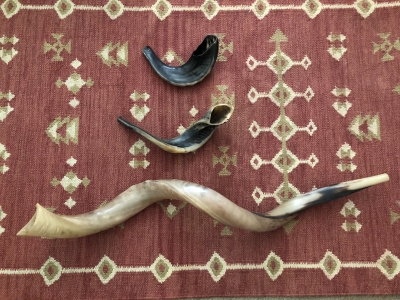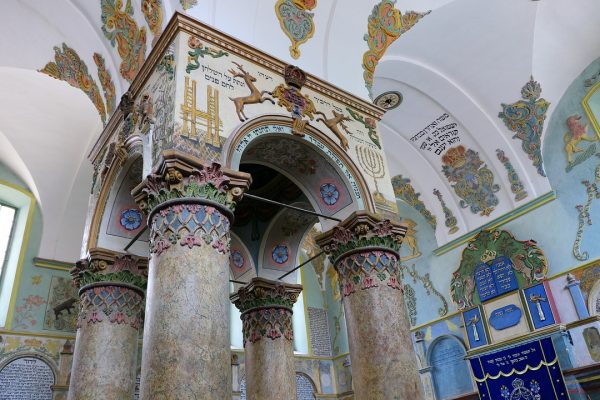As a once and future (I will get back to it!) French hornist, I feel a special attachment to the shofar and have enjoyed serving as ba’al toke’ah on numerous occasions in recent years (I may be a daily Jew, but right now I am pretty much a once- or twice-a-year wind player!). Last year, I stumbled upon what I hope will become a new ritual for me and perhaps inspire some others as well.
In the furnished house we rented in Los Angeles (belonging to a Jewish couple who had made aliyah), there were three shofarot: a long, coiled Yemenite one; a conventional, average-sized one; and a short, spunky one. Or, alternatively put: a papa shofar, a mama shofar, and a baby shofar. Trying to determine which one should resound at our minyan, I finally decided not to decide, and resolved to make use of all three. As it turns out, this quantity perfectly suits the tripartite structure of the initial round of blasts after keri’at ha-Torah as well as the three sedarim of Musaf: Malkhuyot, Zikhronot, and Shofarot. In both cases, I opted for the following order: short, medium, long.
For the initial blowing of the ram’s horn, the mini-shofar seemed best suited. It produced a high, shrill, piercing sound that asked, appealed, indeed insisted, “Wake up!” and further queried, “Who are you? Where are you? What are you doing?” The medium shofar followed with its calm, plaintive song, so redolent of life’s humbling, painful moments, and so inviting of the introspection appropriate to the occasion. And, finally, I turned to the elongated, Yemenite shofar with its deep, all-enveloping, and ultimately comforting tone, suggestive of the Godly compassion and forgiveness for which we pray and upon which we know we can ultimately depend. Subsequently, in the Musaf service, this same progression of tone qualities perfectly matched the course of the liturgy. The sharp, regal tones of the small shofar affirmed the divine sovereignty central to the Malkhuyot service, the plaintive character of its medium-sized counterpart evoked the memories of the past relationship between God and Israel treasured in Zikhronot, and the rich sounds of the Yemenite variant invited the celebration of the ram’s horn that lies at the heart of Shofarot (even as this particular instrument comes instead from a kudu, a large antelope). This long shofar enables the production of the most enduring tones for the teki’ot gedolot that close out these two rounds of blowing—a further reason for it to come last in the progression.
I share this new approach to an ancient ritual in the thought that others might find it of interest and choose to adopt it. Teki’ah!












